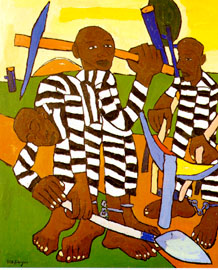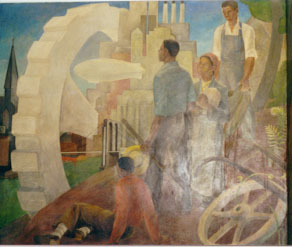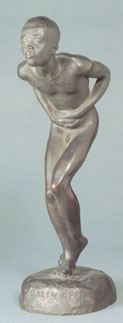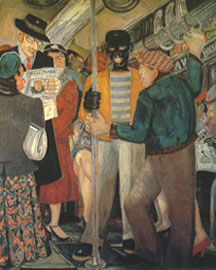
Chain Gang,
William H. Johnson, c.1939.
Oil on wood, 45.75 x 38.5''
| the development of the arts and the artists within the community. Strengthening the community through the arts
worked to raise the moral of communities trapped in the depression. In Harlem, the WPA was a source of solidarity within the art world. It encouraged unprecedented interaction between the various artists and the community. Bringing forth such projects as the Harlem Hospital Murals and the Harlem Community Arts center which drew more than 3,000 students and 10,000 visitors during the first year. |
|









